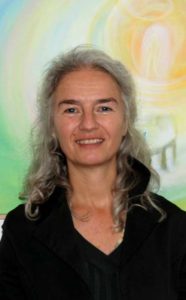Research and practical application
Author: Silvia Siegenthaler
The millennia-old practice of meditating has been the subject of scientific interdisciplinary research for about 30 years, with the aim of gaining deeper insights into how the brain works. This scientific rationale opens up many new possibilities for application in professional disciplines to sustain the positive effects of meditation.
The subject of meditation is multifaceted and far-reaching. We find meditation in all mystical traditions, among primitive peoples, in eastern and occidental cultures and religions, and also in many modern forms: Mental training, mindfulness exercises, silent retreats, stress management methods, etc.
DIFFERENT TECHNIQUES OF MEDITATING
Depending on the form of meditation, the focus is primarily on the physical body, breathing, thoughts, emotions, sound (e.g., tuning forks and singing bowls), chanting (chorales, mantras), body movement (walking meditation, chigong, sacred sound movements, dance), rhythm (music, drumming), inner or outer images, nature (micro-macrocosm), and/or soul qualities such as compassion, kindness, peace, and love.
Scientific meditation research measures and analyzes which changes are neurologically triggered in humans in the process.
In the practical application of these forms of meditation, the following abilities are challenged and promoted: Body awareness and body consciousness, concentration, focus, visualization (mental alignment), arriving at oneself, inner balance (emotional regulation), intuitive thinking, connection with one’s self (soul-spiritual questions).
 Meditation – research and practical application
Meditation – research and practical application
BRIEF DESCRIPTION OF MEDITATION RESEARCH
Meditation research meets with broad scientific and public interest. The subject dedicates conferences and symposia, such as the interdisciplinary congress “Meditation and Science” held in Berlin since 2010. Also the conferences of the “Society for Meditation and Meditation Research” (Cologne) and the symposia of the “Mind and Life Institute” (founded in 1987 by the Dalai Lama and the neuroscientist Francisco Varela).
Basic research shows that meditation is a method for learning to control one’s thoughts and feelings. This happens through regular practice and the resulting regulation of one’s brain. Important work in this regard comes from the American neurologist Prof. Marcus Raichle. He discovered a neuronal network system (default mode network), which makes visible in the measurement what a person does neurologically when he actually does “nothing”. This showed that in subjects without meditation experience, the brain becomes enormously active at such moments, in contrast to subjects with meditation experience.
The number of studies in the field of meditation has risen sharply in the last two decades. psychotherapeutic and educational programs increasingly integrate meditation. Meditative interventions were successfully useful in the treatment of anxiety disorders, relapse prevention for recurrent depressive moods, substance dependence, and eating disorders, among others. Some studies also show good results in bipolar disorder and attention deficit hyperactivity disorder (ADHD). Improvements in quality of life have also been reported for various physical illnesses, such as chronic pain and cancer.
Meditation is not only used successfully in the treatment of illnesses; it has also shown to lead to significant increases in well-being and to coherence and resilience in healthy subjects.
EFFECTS OF MEDITATION
Meditation creates the experience of personal presence at rest within oneself. It promotes body awareness (i.e. conscious body perception) as well as the ability to find an inner distance to the flow of thoughts and feelings in order to be able to deal with them consciously. I.e. not to be simply determined by them in our reactions.
With the ability for self-determination and self-regulation, emotionally challenging situations and shocks can be cushioned.
One remains inwardly in a dynamic-stable state. Self-responsibility regarding one’s own inner life grows. This results in coming to oneself and staying with oneself and thus also in good stress management (resilience).
The meditation-experienced person is attentive to himself and his own body. He reacts accordingly preventively. According to numerous publications (see references to specialized research at the end of this article), the structures and activities of the brain show significant differences in regularly meditating subjects and in non-meditating subjects.
MEDITATING IN THE PRESENT
Meditation is not only one particular form. It is not about the outer form or the duration of meditation, but about the inner quality. If one associates meditation with a must, pressure and compulsion arise. Strained doing and forcing has a counterproductive effect in one way or another. The lightness and voluntariness get lost … and with it also the joy. One misses the actual effect of meditation. One would have to ask oneself: Why do I meditate in such a way? What do I want to achieve? To whom do I want to prove something?
 Meditation – Research and Practical Application
Meditation – Research and Practical Application
The purpose and goal of meditation is a development of consciousness that encompasses body, mind and spirit. Otherwise, fixation on particular meditation techniques can lead people away from themselves, because their attention then focuses on the external form – and thus on the future: “If I master the technique, then I will have learned to meditate properly.” The goal of meditation, however, is not some point in the future, but the conscious “emergence” from the flow of thought and time into being in the here and now. For in meditation, the goal is always also the path: arriving at oneself.
Meditation is the encounter with one’s own inner self. To the inner world belong the thoughts, the emotions, the feelings as well as the whole soul-spiritual being.
 About the author
About the author
Silvia Siegenthaler (born 1962), federally certified pedagogue and complementary therapist in the method craniosacral therapy, sensitive artist, with ongoing exhibitions, gives seminars, lectures and monthly meditation evenings in Bern. In January 2020, her book “Meditation – connecting with the inner source. Inspirations on an educational basis”.
This article appeared originally on the German Homepage of Tattva Viveka: Meditation




